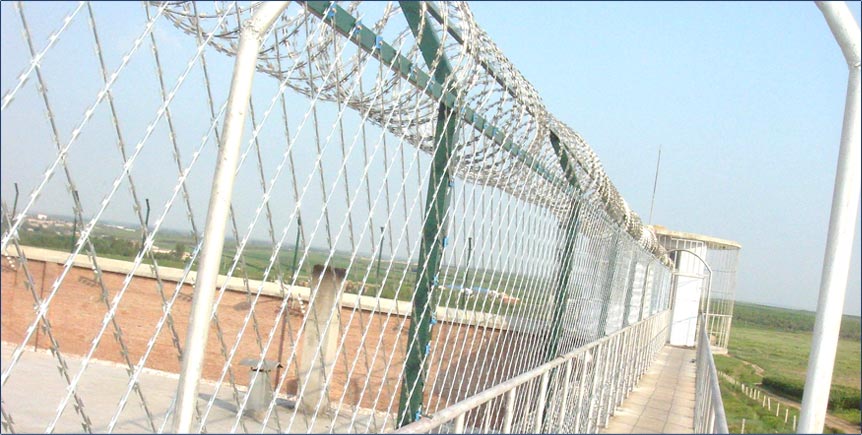What is Razor Blade Wire?
Razor blade wire, often referred to as razor wire or simply barbed tape, is a type of fencing material that is designed to enhance security and deter unauthorized access to a property or area. It is a formidable obstacle due to its sharp, razor-like edges, which make it exceedingly difficult and dangerous for individuals to breach. In this article, we will delve into the various aspects of razor blade wire, including its history, construction, applications, and the reasons behind its widespread use for security purposes.
**1. A Brief History: The concept of barbed wire dates back to the 19th century when it was first used to enclose and protect vast stretches of land in the American West. Over time, the design evolved, and in the early 20th century, the more menacing razor wire was introduced. Initially employed in military settings during World War I, razor wire quickly gained recognition for its effectiveness in creating secure perimeters.
**2. Construction and Composition: Razor blade wire is constructed using a core wire, typically made of high-tensile steel, which is then wrapped with sharp-edged, pointed blades. These blades can be fashioned into various shapes, including straight, concertina, or spiral configurations. The sharp edges of the blades are designed to cause injury to anyone attempting to climb or breach the barrier, serving as a powerful deterrent.
**3. Types of Razor Blade Wire: There are several types of razor blade wire available, each with specific characteristics and applications:
Concertina Razor Wire: This type consists of coils or spirals of razor wire, making it easy to deploy as a temporary or permanent barrier. Concertina wire is commonly used for military installations, prisons, and high-security facilities.

Flat Wrap Razor Wire: Flat wrap razor wire features flat strips of razor tape that are affixed to a wall or fence. It is often used to enhance the security of existing structures.
Razor Mesh: Razor mesh combines razor wire with traditional wire mesh, creating a formidable barrier with added visibility. It is suitable for applications where both security and visual deterrence are important.
**4. Applications of Razor Blade Wire: Razor blade wire is employed in various security-related applications, including:
Prisons and Correctional Facilities: It is extensively used to secure the perimeters of prisons, preventing inmates from escaping and unauthorized access.
Military Installations: Razor wire is deployed around military bases, camps, and sensitive areas to enhance security.
Border Security: Many countries use razor blade wire to secure their borders, deterring illegal crossings.
Industrial Sites: Industrial complexes and critical infrastructure facilities often use razor wire to protect against trespassers and potential threats.
Commercial Properties: Some businesses use razor blade wire for added security, particularly in high-crime areas.
**5. Advantages of Razor Blade Wire: Razor blade wire offers several advantages in terms of security and deterrence:
Effective Deterrence: The sharp blades create a formidable barrier that is difficult and dangerous to breach, serving as a powerful deterrent.
Visibility: The distinctive appearance of razor wire sends a clear message of heightened security, dissuading potential intruders.
Customizable: BZ Razor blade wire can be tailored to fit specific security requirements, making it suitable for a wide range of applications.
**6. Challenges and Concerns: While razor blade wire is effective in enhancing security, it also raises concerns related to safety and humane treatment. Accidental contact with razor wire can result in serious injuries, and there have been debates regarding its use in certain settings.
In conclusion, razor blade wire is a highly effective security measure that has found widespread use in various applications, ranging from prisons and military installations to industrial sites and borders. Its sharp blades and imposing appearance make it an excellent deterrent against unauthorized access. However, its use also raises ethical and safety considerations, highlighting the need for responsible deployment and thoughtful security planning. As technology continues to evolve, the future of security barriers may bring about new innovations and solutions that balance security and safety concerns.
119
0
0

Comments
All Comments (0)